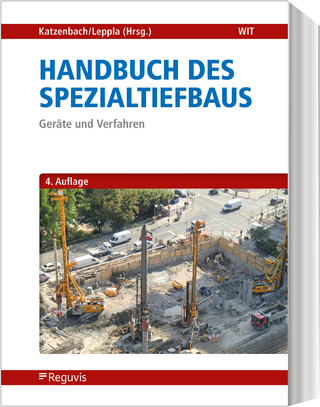
Principles of Induced Polarization for Geophysical Exploration
Elsevier Science Ltd (Verlag)
9780444414816 (ISBN)
- Titel ist leider vergriffen;
keine Neuauflage - Artikel merken
PrefaceAcknowledgments1. Introduction A Historical Summary of IP Research The IP Effect IP Response The Decay Curve IP Measurement The Basic IP Measurement ? V/V Phase-Angle IP Measurement Errors Units Used in IP Surveying The Glossary2. Resistivity Principles Resistivity Theory Ohm's Law Three-Dimensional Resistivity Resistivity and Conductivity Potential Field of a Current Electrode Pair Refraction of Current Flow Lines Equipotential Surfaces Resistivity Anisotropy Paradox of Anisotropy Superposition and Reciprocity Resistivity Type Curves by the Method of Images Resistivity of Earth Materials Resistivity Properties of Minerals Electrical Conduction in Rocks Resistivity of Mineralized Rocks Resistivity Exploration Methods Resistivity Equipment Self-Potential Resistivity Sounding Resistivity Profiling Pseudosection Plotting3. Theory of Induced Polarization Electrochemical Theory The Electrode Overvoltage The Double Layer Faradaic and Nonfaradaic Paths Warburg Impedance Membrane Polarization Applications of Electrochemical Theory Dielectric Constant Electrical Models of Induced Polarization Equivalent Circuit The Decay Curve Field of a Dipole Electrical Polarization Polarization Induced Polarization Magnetic Induced Polarization The Equivalence of Frequency and Pulse Measurements The Place of IP Theory in the Exploration Method4. Laboratory Work in Induced Polarization Electrical Measurements of Rocks Types of Experiments Sampling and Preparation Electrical Measuring Equipment Environmental Chamber Sample Holders Frequency-Domain Studies Resistivity Spectrum Interpretation of the Resistivity Spectrum Effects of Current Density Effect of Rock Saturation Anisotropism Time-Domain Measurements Charge and Decay Cycles Phase Measurement Early Part of Decay Curve and the Comparison with Frequency Effects Considerations of Laboratory and Field Results5. IP Field Equipment Historical Development Design Considerations Parameters to be Measured Electrode Resistance Voltage and Polarization Signals Noise Characteristics of the Ground The Signal-Gene Rating System Motors and Generators The IP Transmitter The IP Receiver Self-Potential Buckout The Time-Domain Receiver The Frequency IP Receiver Digitized IP Field Equipment Design Considerations from Frequency Analysis of a Square Wave Filtering6. Telluric Noise and Electromagnetic Coupling Telluric (Earth) Currents The Magnetosphere Micropulsations Man-Made Electrical Noise Sferics Methods of Avoiding Magnetotelluric Noise Coupling of Electrical Circuits Resistive Coupling Capacitive Coupling Cultural Coupling Effects Electromagnetic Coupling The EM-Coupling Problem EM Coupling and Phase EM Coupling Relationships — Correction Curve EM Coupling for Small Inductive Effects Using the Dipole—Dipole Array Methods of Avoiding EM Coupling Detection and Identification of EM Coupling7. IP Field Surveying Field Procedures Equipment List Transportation Survey Layout Permission to Survey The Current-Sending System in the Field The Generator Station Electrode Preparation Review of Theory of Current Electrode Layout Electrode Resistance The Sender in Operation The Voltmeter-Receiver System Field Calibration Procedures The Porous-Pot Potential Electrode Reading The Receiver IP Survey Conditions Signal-to-Noise Ratio Comparison of Electrode Arrays in IP Surveying Safety8. Drill-Hole and Underground Surveying and the Negative IP Effect Differences Between Surface and Subsurface Methods Theory Survey Method Interpretation Techniques For Subsurface IP and Resistivity Surveys Hole Logging For Rock Properties Exploration Drill-Hole Surveying Underground IP Surveying Negative IP Effects 1959 Interpretation of Induced-Polarization Data Methods of Interpretation Case-History Studies Physical Model Studies The Computation of Theoretical IP and Resistivity Curves Master Curves Direct Interpretation Numerical Modeling Grade Estimation of Mineralization Using the IP Method Quality of the Interpreted Data Review of Pseudosection Data The Interpretation Report10. The Complex-Resistivity Method History of the Method The Complex-Resistivity Survey Host-Rock Response and CR Spectra Separation of the Electromagnetic Coupling Component in Complex Resistivity Data Identification of Type of Metal Ion Signal Detection Capabilities of The Complex-Resistivity Method Disadvantages of the Complex-Resistivity MethodGlossary of Terms Used in Induced-Polarization and Resistivity ExplorationReferencesIndex
| Erscheint lt. Verlag | 1.1.1984 |
|---|---|
| Reihe/Serie | Developments in Economic Geology |
| Zusatzinfo | 165ill.8tabs. |
| Verlagsort | Oxford |
| Sprache | englisch |
| Themenwelt | Naturwissenschaften ► Geowissenschaften ► Geologie |
| Naturwissenschaften ► Geowissenschaften ► Geophysik | |
| ISBN-13 | 9780444414816 / 9780444414816 |
| Zustand | Neuware |
| Informationen gemäß Produktsicherheitsverordnung (GPSR) | |
| Haben Sie eine Frage zum Produkt? |
aus dem Bereich


